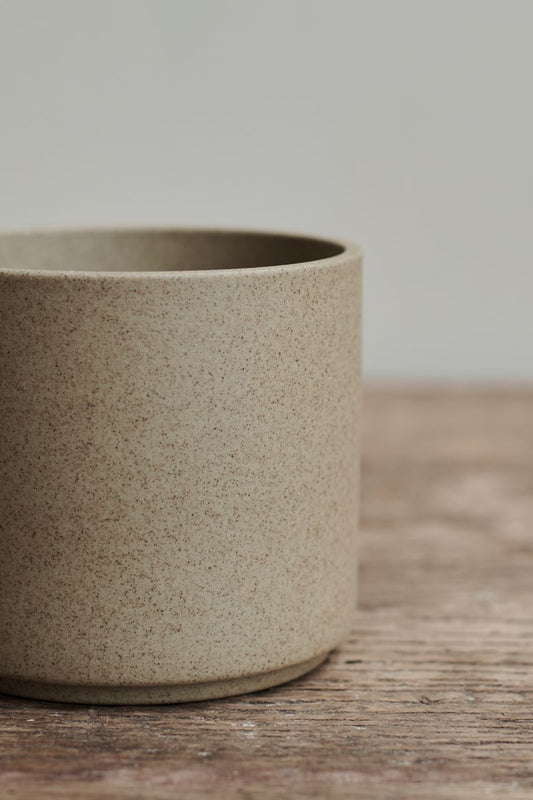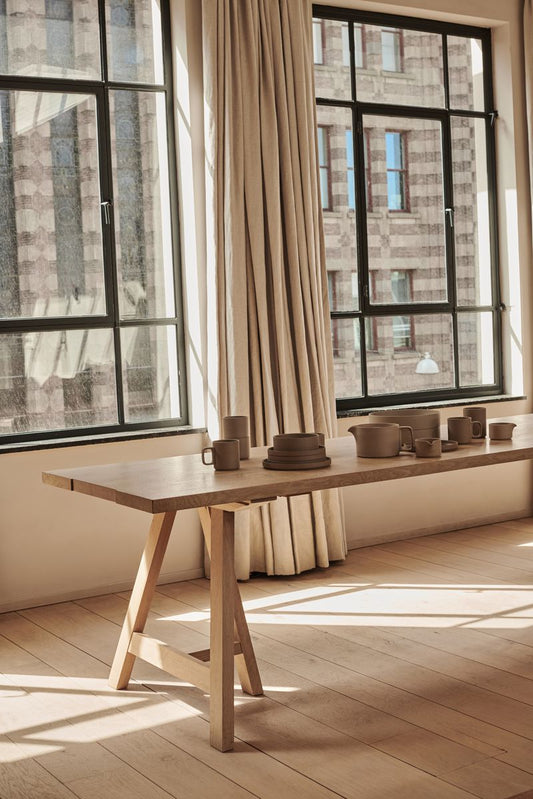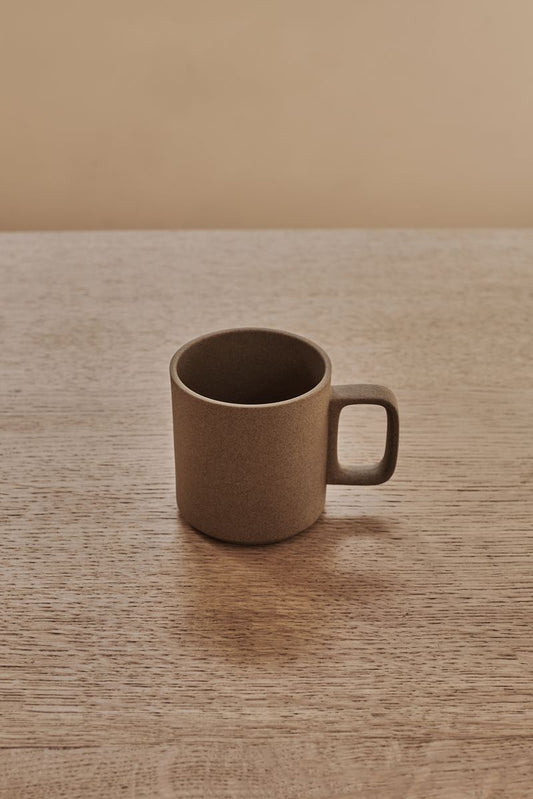Hasami Porcelain

About
Clean lines / Multi-Function / Material and Texture / Made in Japan
The historic town of Hasami in Nagasaki Prefecture is one of the foremost pottery districts in Japan. Hasami began crafting its porcelainware almost 400 years ago during the Edo period, distributing them throughout Japan as well as to Europe through the port of Nagasaki.
Hasami craftsmen were able to develop a highly efficient system to mass produce their porcelain products thereby making them more consistent in quality and reasonable in price.
Hasami Porcelain was designed by Takuhiro Shinomoto of Tortoise in Venice, CA whose vision was to integrate modern tableware design with the organic quality produced by traditional Japanese manufacturing techniques.
Explore the collection
-

 Sold out
Sold outHasami Cup Medium Natural
Regular price €22,00 EURRegular priceUnit price / per -
Hasami Plate Natural
Available in multiple variantsRegular price From €29,00 EURRegular priceUnit price / per -

 Sold out
Sold outHasami Tea Pot Natural
Regular price €85,00 EURRegular priceUnit price / per -
Hasami Mug Natural
Regular price €32,00 EURRegular priceUnit price / per
Japanese Essence
Hasami Porcelain is a tribute to timeless Japanese craft. The curved lines, the simple forms and traditional glazing all add to their natural charm. These handmade ceramics are cleverly designed to be stacked and stored with ease.
The natural porcelain is lightly glazed and the earthy textures are obtained by mixing different local clays into the porcelain, so slight differences in colour are natural and part of their beauty.
• Handmade in Japan
• Dishwasher- and microwave safe

Hasami’s creative director and designer is Taku Shinomoto, who also runs Tortoise General Store in Venice Beach with his wife Keiko.
When he sat down to design this line of Japan-made porcelain dinnerware in 2012, he wanted it to be modern and stackable with a timeless utility that would translate to any country or culture.
While poring over sample archives in Hasami-cho, the brand’s namesake town in Nagasaki that’s been a center of Japanese ceramic production for over 400 years, he just stumbled on it. Or maybe more accurately, it stumbled on him. They showed him this sample cup. It was something they had made like 20 years before and never used again – and it was made from an interesting material.

“I thought ‘I like this! This is what we have to make. There is no other choice.” The material, he was told, was a proprietary blend of local clay and crushed stone from a nearby island. It had a singularly unique natural look. View the entire Hasami Collection.
Join The Loft's Inner Circle mailing
Join our Inner Circle and enjoy exclusive invites to events, be the first to discover new interior treasures and read our most inspiring interior stories.












